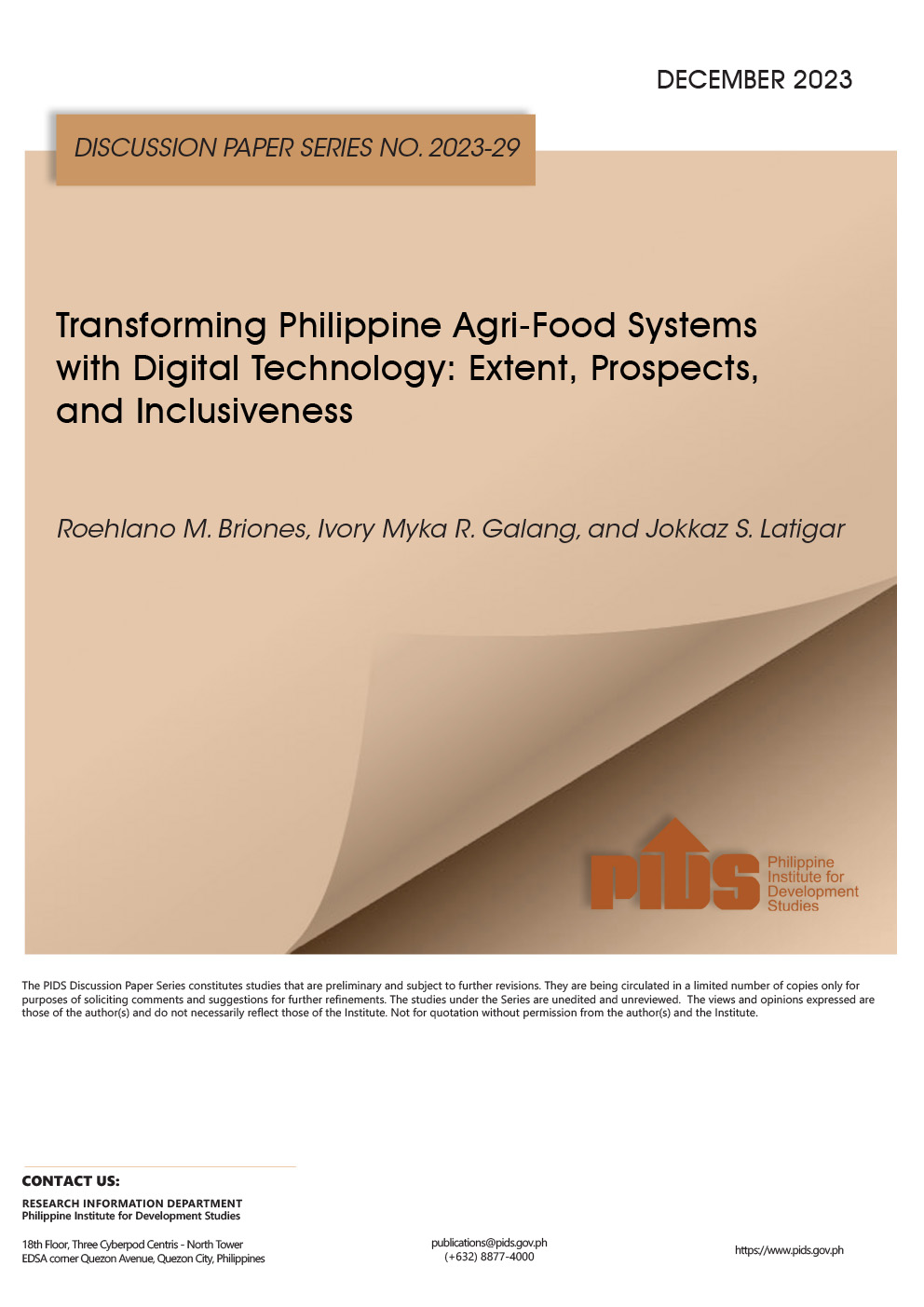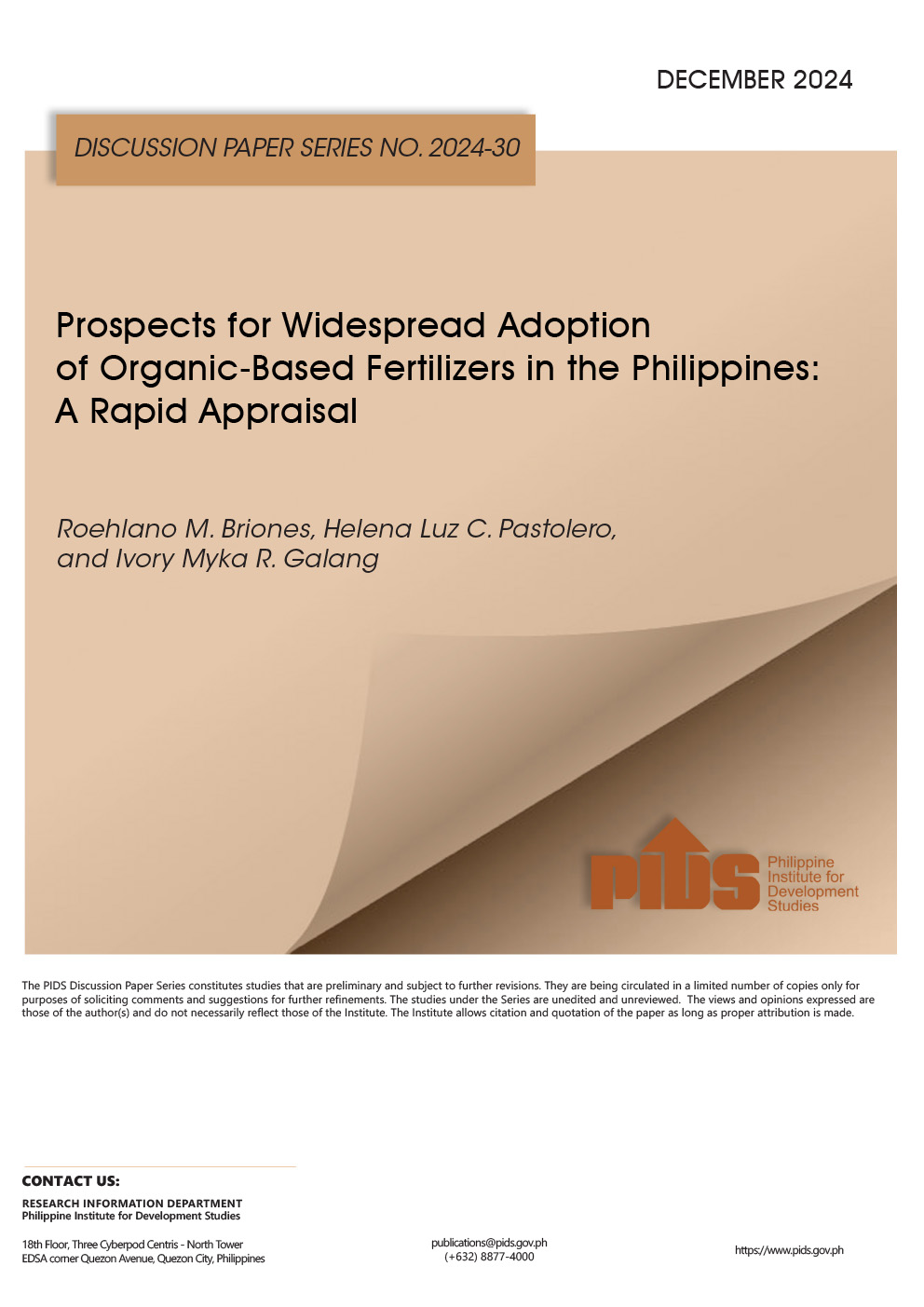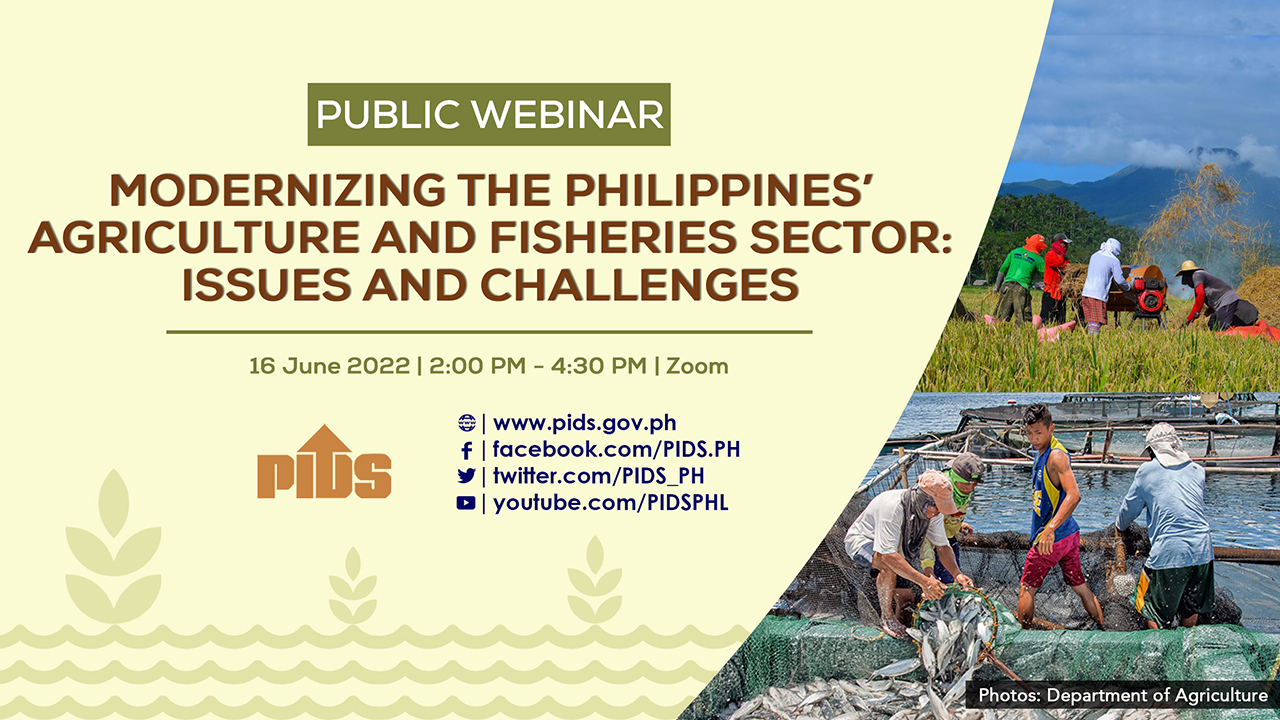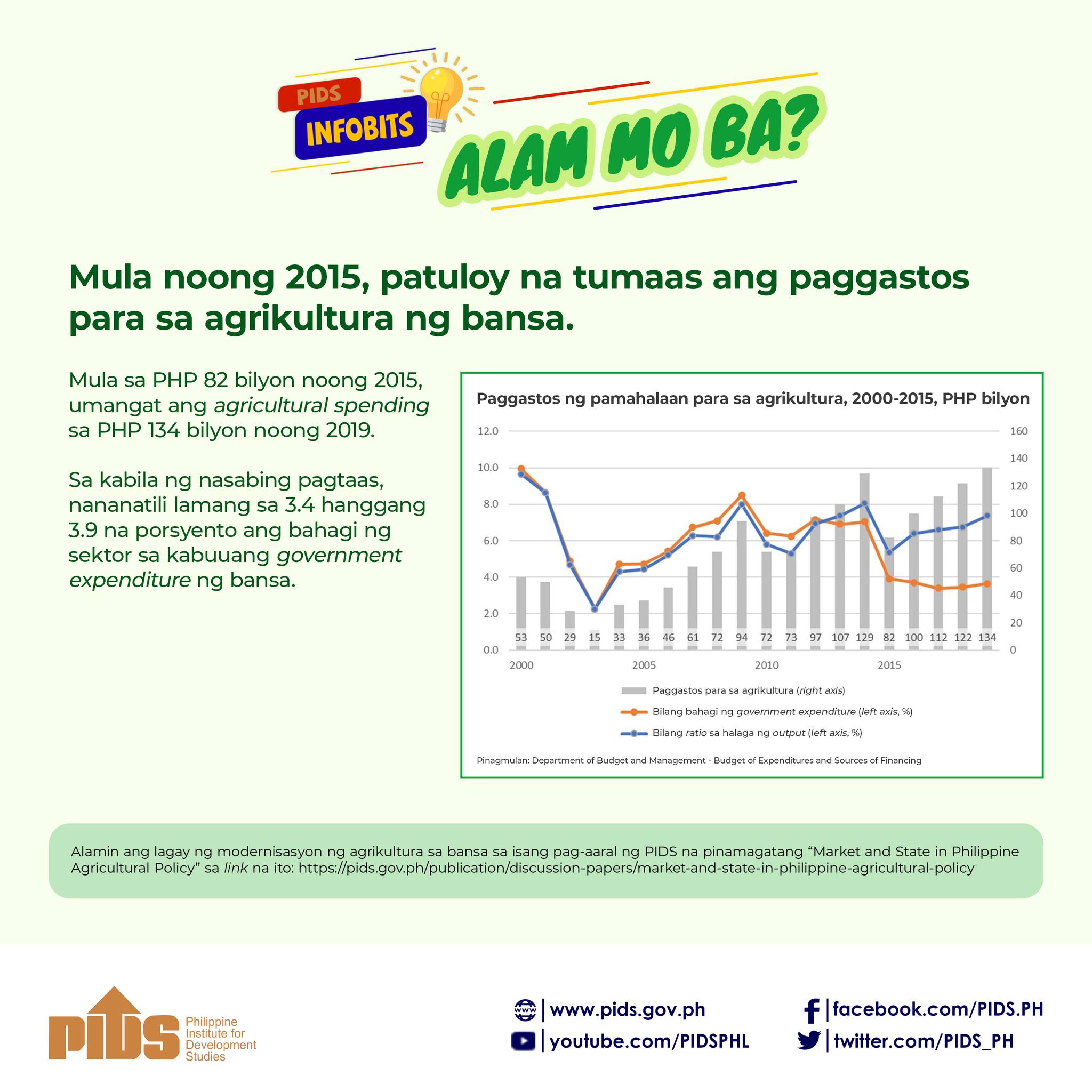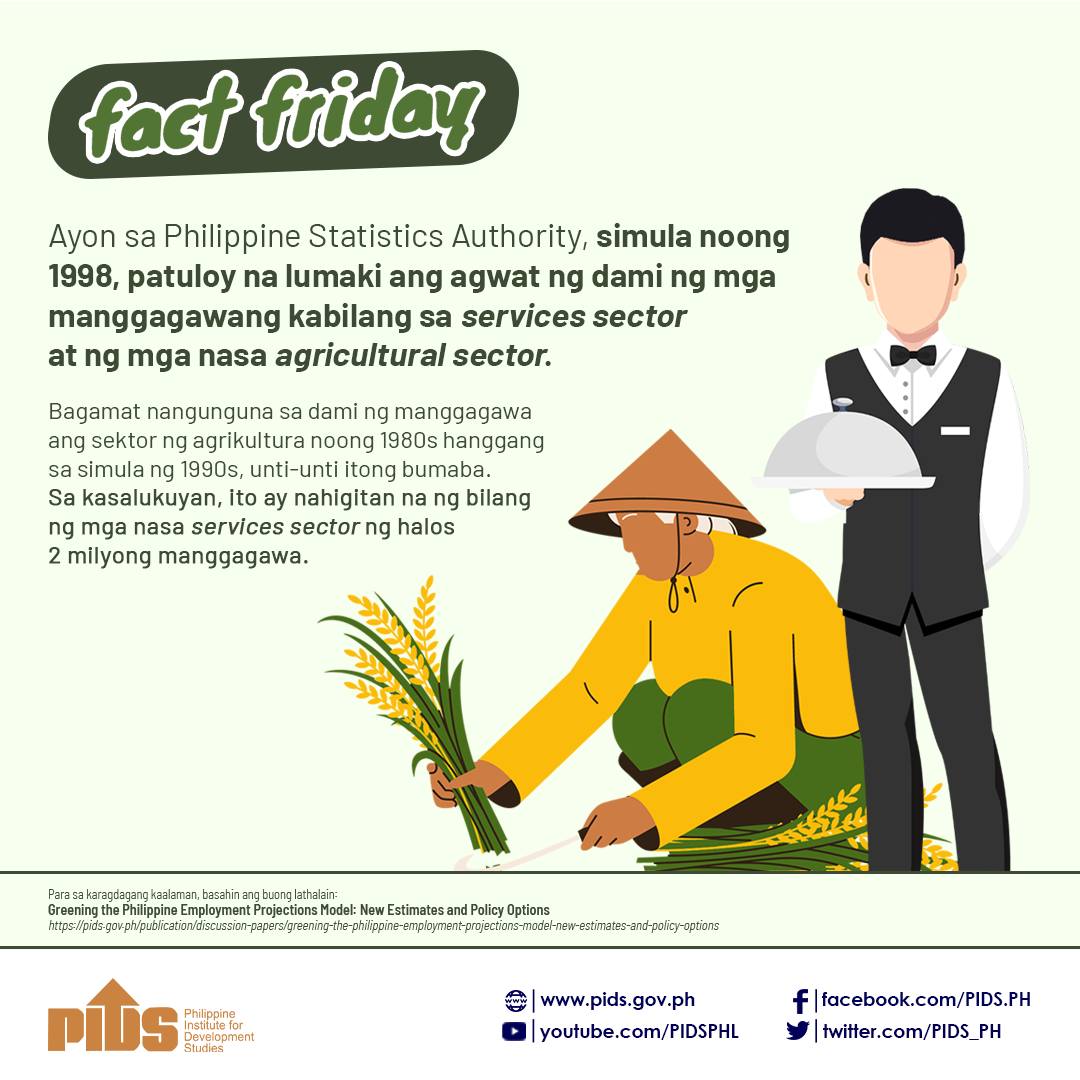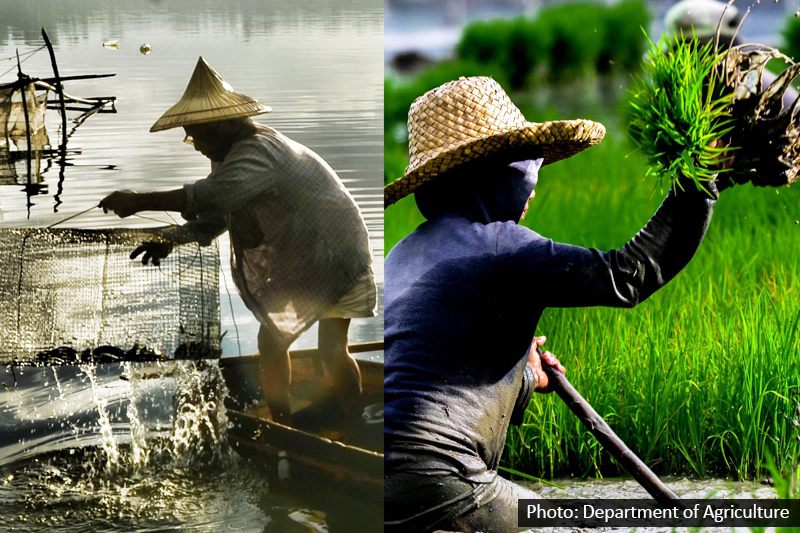
The dissemination of localized agriculture-related weather forecasts and advisories serves as useful early warning tools for smallholder farmers and fisherfolk during disasters.
Perla Baltazar, a senior technical officer of the Department of Agriculture Climate-Resilient Agriculture Office (DA-CRAO), stressed this during the webinar conducted by the Philippine Institute for Development Studies (PIDS) titled “Weather and Climate Information Needs of Small Farmers: Challenges and Opportunities” recently.
According to Baltazar, the agriculture department is bent on mainstreaming climate change in its programs and activities as extreme weather conditions threaten the country’s agriculture and fishery sector. To achieve this, it has to “create an enabling environment for the climate-sensitive sectors and perform services with a climate lens”.
This year, the DA has expanded the Adaptation and Mitigation Initiatives in Agriculture (AMIA) strategy, its flagship program for climate adaptation and mitigation, to test climate-resilient agriculture (CRA) programs. AMIA villages are established to pilot test these programs.
“Our foresight in the AMIA village is to allow our farming and fishing communities to pursue livelihood while effectively managing climate risks,” she explained.
An example of an AMIA village that used CRA practices is found in Pamplona, Camarines Sur. According to Baltazar, the farmers in the village excel in the utilization of Climate Information Services (CIS) in their agricultural practices.
However, she mentioned that there is a challenge in disseminating information in some AMIA villages. Part of the solution is to put out “weather bulletin boards and weather advisories in public places such as municipal halls, porch, or even barangay halls” where farmers and fisherfolk can easily access them.
But she noted that this solution is not as fast as having the information delivered by texts or radio messages.
Relative to this, the department has been continuously providing periodic advisories using the Philippine Atmospheric, Geophysical and Astronomical Services Administration’s (PAGASA) weather bulletin boards, which are translated into farm advisories. The advisories from PAGASA serve as bases for farm management and operations, minimizing losses in farm inputs and crop damage. This will ultimately result in greater yield and income for agricultural workers.
Aside from establishing AMIA villages, another CIS initiative is the adoption of the Climate Resiliency Field School (CFRS) approach in the municipality of Gerona in Tarlac. The CFRS is introduced by the Rice Watch and Action Network (R1), a civil society organization that aims to assist farmers in adapting to climate change and make farming sustainable through a community-based approach.
Baltazar noted that the capacity of the Agricultural Training Institute, the extension arm of the DA mandated to train agricultural extension workers and their beneficiaries, is limited. Hence, there is a need for partners like R1 to help scale up the reach of CIS advocacies and lead in the delivery of e-extension services for agriculture and fisheries.
The department has identified challenges from their lessons in implementing the CIS. One major challenge that Baltazar highlighted is the need for additional capital for smallholder farmers and fisherfolk. To ease their financial burden, the department has created various support loan programs such as the Expanded SURE Aid and Recovery Project, Agri-Negosyo, and Kapital Access for Young Agripreneurs.
Other challenges mentioned by Baltazar include the lack of local translation of weather forecasts, irregular dissemination of advisories, insufficient knowledge of farmers on risk management options, lack of communication strategies to immediately reach communities, and limited access of farmers to risk management technologies, especially in emergencies. ###
Watch the video of this seminar at https://www.facebook.com/PIDS.PH/videos/693971134551983/. For more videos of PIDS events, go to https://www.pids.gov.ph/videos.
Perla Baltazar, a senior technical officer of the Department of Agriculture Climate-Resilient Agriculture Office (DA-CRAO), stressed this during the webinar conducted by the Philippine Institute for Development Studies (PIDS) titled “Weather and Climate Information Needs of Small Farmers: Challenges and Opportunities” recently.
According to Baltazar, the agriculture department is bent on mainstreaming climate change in its programs and activities as extreme weather conditions threaten the country’s agriculture and fishery sector. To achieve this, it has to “create an enabling environment for the climate-sensitive sectors and perform services with a climate lens”.
This year, the DA has expanded the Adaptation and Mitigation Initiatives in Agriculture (AMIA) strategy, its flagship program for climate adaptation and mitigation, to test climate-resilient agriculture (CRA) programs. AMIA villages are established to pilot test these programs.
“Our foresight in the AMIA village is to allow our farming and fishing communities to pursue livelihood while effectively managing climate risks,” she explained.
An example of an AMIA village that used CRA practices is found in Pamplona, Camarines Sur. According to Baltazar, the farmers in the village excel in the utilization of Climate Information Services (CIS) in their agricultural practices.
However, she mentioned that there is a challenge in disseminating information in some AMIA villages. Part of the solution is to put out “weather bulletin boards and weather advisories in public places such as municipal halls, porch, or even barangay halls” where farmers and fisherfolk can easily access them.
But she noted that this solution is not as fast as having the information delivered by texts or radio messages.
Relative to this, the department has been continuously providing periodic advisories using the Philippine Atmospheric, Geophysical and Astronomical Services Administration’s (PAGASA) weather bulletin boards, which are translated into farm advisories. The advisories from PAGASA serve as bases for farm management and operations, minimizing losses in farm inputs and crop damage. This will ultimately result in greater yield and income for agricultural workers.
Aside from establishing AMIA villages, another CIS initiative is the adoption of the Climate Resiliency Field School (CFRS) approach in the municipality of Gerona in Tarlac. The CFRS is introduced by the Rice Watch and Action Network (R1), a civil society organization that aims to assist farmers in adapting to climate change and make farming sustainable through a community-based approach.
Baltazar noted that the capacity of the Agricultural Training Institute, the extension arm of the DA mandated to train agricultural extension workers and their beneficiaries, is limited. Hence, there is a need for partners like R1 to help scale up the reach of CIS advocacies and lead in the delivery of e-extension services for agriculture and fisheries.
The department has identified challenges from their lessons in implementing the CIS. One major challenge that Baltazar highlighted is the need for additional capital for smallholder farmers and fisherfolk. To ease their financial burden, the department has created various support loan programs such as the Expanded SURE Aid and Recovery Project, Agri-Negosyo, and Kapital Access for Young Agripreneurs.
Other challenges mentioned by Baltazar include the lack of local translation of weather forecasts, irregular dissemination of advisories, insufficient knowledge of farmers on risk management options, lack of communication strategies to immediately reach communities, and limited access of farmers to risk management technologies, especially in emergencies. ###
Watch the video of this seminar at https://www.facebook.com/PIDS.PH/videos/693971134551983/. For more videos of PIDS events, go to https://www.pids.gov.ph/videos.

